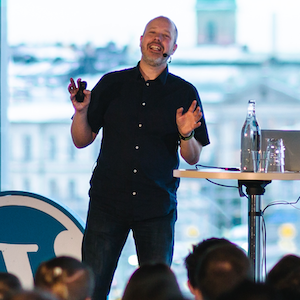ekandreas/bladerunner
WordPress Blade L5/6/7/8 template engine
Downloads
Stars
Version
This package has been archived
Bladerunner
WordPress plugin for Laravel Blade templating.
To install it to your Composer based WordPress installation:
composer require ekandreas/bladerunner
Activate the plugin inside WordPress and templates with *.blade.php are inspected and active. Your theme still needs an index.php due to WordPress basic functionality. When removed the theme is known as broken.
If you don't use a composer based WordPress development environment you can download the latest distributed plugin at Bladerunner site http://bladerunner.aekab.se and install it the common way with zip upload to WordPress via wp-admin.
Releases to this plugin is listed last in this readme.
Hello World
- Install the library with composer
- Make sure the cache-folder is writeable in uploads, eg
../wp-content/uploads/.cache - Activate the plugin
- Create a view, eg:
<!-- view file: views/pages/index.blade.php -->
Hello World Page rendered at {{ date('Y-m-d H:i:s') }}
- In your
index.php, add a global call for the view created, eg:
<?php
bladerunner('views.pages.index')
https://laravel.com/docs/5.2/blade
Cache
- If
WP_DEBUGis set and true then templates always will be rendered and updated. - View files (cache) is invalidated at
save_post - (It's a really good idea to empty the .cache folder inside
uploadswhen develop templates. Eg, create adelcommand inside your gulp-file.)
Directories
- Your cached views will always be stored in your wp upload folder,
.cache - Your views must be placed within your theme folder.
- Your views must have
.blade.phpextension.
Template helper
There is a template helper function named bladerunner, defined globally to use in standard WordPress templates.
Example:
You want to create a 404-template and don't want to use the .blade.php extension to the template file.
- Create a 404.php in the theme root.
- Add the following code to the template:
<?php
bladerunner('views.pages.404');
- In the folder
views/pages, create a blade template404.blade.php
You can pass any data with the global bladerunner function like so,
<?php
bladerunner('views.pages.404', ['module'=>$module]);
or use compact, eg:
<?php
bladerunner('views.pages.404', compact('module'));
Controllers
With version 1.7 controllers are added to Bladerunner. As default Bladerunner will look for extended classes in the theme folder + /controllers. If you would like to add or change the controller paths take a look below at filters!
The controller class has to extend \Bladerunner\Controller to work.
It will guess the path to the view but you can override this with protected $view='your.custom.view.path''
The controller files follow the same hierarchy as WordPress.
You can view the controller hierarchy by using the Blade directive @debug.
Extend the Controller Class, it is recommended that the class name matches the filename. Create methods within the Controller Class:
- Use public function to expose the returned values to the Blade views/s.
- Use public static function to use the function within your Blade view/s.
- Use protected function for internal controller methods as only public methods are exposed to the view. You can run them within
__construct
Controller example:
The following example will expose $images to views/single.blade.php
controllers/Single.php
<?php
namespace App;
use Bladerunner\Controller;
class Single extends Controller
{
/**
* Return images from Advanced Custom Fields
*
* @return array
*/
public function images()
{
return get_field('images');
}
}
views/single.blade.php
@if($images)
<ul>
@foreach($images as $image)
<li><img src="{{$image['sizes']['thumbnail']}}" alt="{{$image['alt']}}"></li>
@endforeach
</ul>
@endif
Hooks and Filters
Bladerunner continuously implements filters and hooks to modify values and processes.
Hooks
...
Filters
Modify Bladerunners cache folder path, default ../wp-content/uploads/.cache
add_filter('bladerunner/cache/path', function() {
return '/my/path/to/cache';
});
If you don't want Bladerunner to create the cache folder:
add_filter('bladerunner/cache/make', function() {
return false;
});
If you wan't to customize the base paths where you have your views stored, use:
add_filter('bladerunner/template/bladepath', function ($paths) {
if (!is_array($paths)) {
$paths = [$paths];
}
$paths[] = ABSPATH . '../../resources/views';
return $paths;
});
If you wan't to customize the controller paths where you have your controllers stored, use:
add_filter('bladerunner/controller/paths', function ($paths) {
$paths[] = PLUGIN_DIR . '/my-fancy-plugin/controllers';
return $path;
});
We will soon add more WordPress extenstions to the Bladerunner engine. Please give us your great examples to implement!
Links
- Bladerunner site with documentation and distro
- Docs Laravel Blade v5.2
- Packagist
- Code repo at Github
- Support / Issues
Tests
Test requirements:
- Latest Docker install (not the old school Boot2Docker)
- PHP Composer Currently only tested on OSX.
Test step by step
Checkout the components for testing via Composer inside the repo:
composer update
Using Testrunner (required-dev package) and Docker the test should be exexuted with a single command:
vendor/bin/dep testrunner



